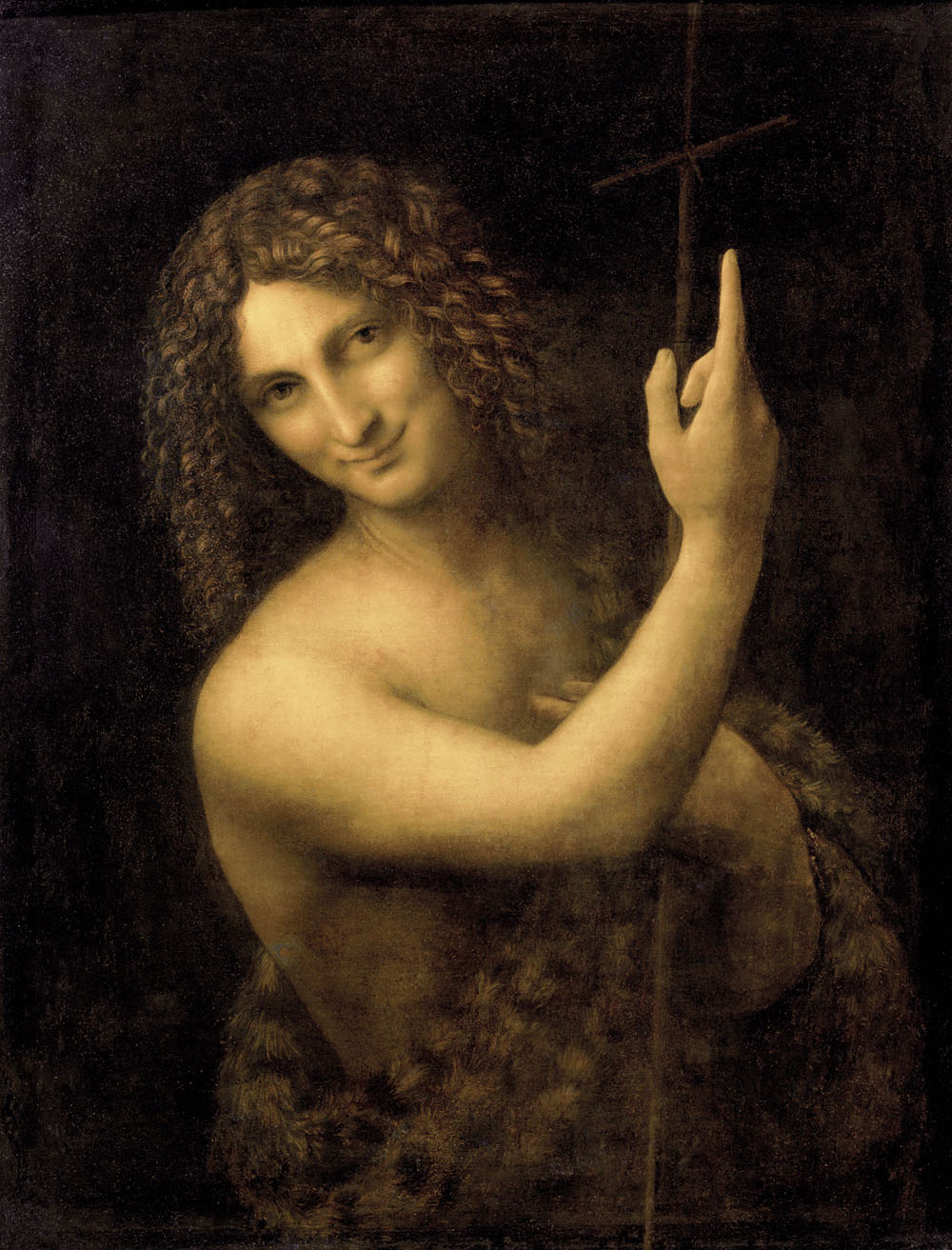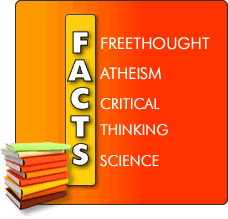Robert wrote:
From right to left in the painting of The Last Supper we see the twelve apostles are modelled on the shape of the stars of the twelve signs of the zodiac.
That is totally counterintuitive to what the movement of the human eye would be in reading a thematic work of art.
Being the naturalist he was, along with his interest in optics, it makes much more sense that Leonardo would encourage viewers to move their eyes from left to right - the same way text is read.
The two primary points of the narrative the painting is expressing are:
1) The early moments of Christ's last supper wherein he teaches his followers about the Eucharist - pointing to the wine glass and reaching for the bread.
2) The reaction of the disciples to the news that one of them will betray him. And as I've said before, if you examine their reactions, the physical and emotional actions of each group form a crescendo, from left to right, from subdued to an explosion of physical energy.
There was a long history of this sort of imagery in Italian art before and after Leonardo's masterpiece.
Soon after completion much of the painting began to bubble and blister because of the technique Leonardo used. It is not a true fresco (the paint never became permanent on the surface of the wall). Much of it was restored, not once, but twice, from what I recall. Much of it had to be painted over. Some parts were nearly entirely redone.
Your star pattern may follow trajectory that was not Leonardo's work at all.
In 1652 a doorway was cut into the wall where Christ's feet had been. After which it was sealed off, causing more damage to the painting. The two projects that were attempted to salvage the painting caused even more damage, according to Professor Bent.
French troops that occupied Milan in 1796 threw rocks at the mural and scratch out the eyes of some of the disciples.
20 years later an attempt was made to detach the painting from the wall in hopes to salvage it by moving it to a safer place.
That caused more damage.
Robert wrote:
The plot thickens. From Wikipedia, we learn that Leonardo habitually used mirror writing, from right to left.
There is no secret plot going on here regarding Leo's writing. In fact, wiki states exactly what Bent and scholars believe is the reason why he wrote this way:
The purpose of this practice by Leonardo remains unknown, though several possible reasons have been suggested, For example writing left handed from left to right would have been messy because ink just put down would smear as his hand moved across it. Writing in reverse would prevent such smudging
Leo was left handed. It's more than likely he didn't want his sleeves to get wet. He was writing this way before he became Italy's greatest Renaissance Man. Its childishly naive to think he thought writing backwards was some brilliant way to code his writings when anyone with a mirror could decipher what was written.
A genius wouldn't be that dumb.
Robert wrote:
friends on another board have pointed out to me that the fellow with the dagger is Saint Peter, not Judas. Judas is Mr Moneybags
Of course it is Peter holding the dagger and not Judas.
Do you want to know the real reason why you missed the obvious? Because you are too busy looking for your own narrative and not reading the painting the way it was intended to be read - as a scriptural narrative. It was Peter who would cut the centurian's ear off. Judas had already been given the 30 pieces of silver before the last supper. You missed the obvious because you are looking up at the stars, Robert.
Robert wrote:
The knife is not disembodied, but is held secretly by Peter. Perhaps getting ready to secretly put the knife to the wisdom of Christ in order to establish the Roman Church?
Too much additives to a story already told.
Robert wrote:
On this question of using an artist's copy, for the purpose of this thread, the postures of the twelve apostles are the same as in the original, but are just a lot clearer. I don't think that artist changed Da Vinci's painting with cosmic intent as I did by changing the table cloth.
You don't think the artist changed Da Vinci's painting?
Think again, Robert. It was actually more than ONE artist involved in more than one restoration project. The extent of the restoration of the first two projects is unknown but thought to be relatively extensive.
Robert wrote:
Astrology was very prominent in Leonardo’s day, including among his sponsor Popes, but there is no evidence I have found that Leonardo had an interest in astrology
Is this a Freudian slip?
You are right. There isn't a single ounce of evidence that Leo was either interested in astrology, or defiled his art by hiding star patterns in them.
You have as much evidence that Leo hid the signs of the zodiac in his Last Supper as I do that Jesus miraculously made his face appear on my toast yesterday morning.
Robert wrote:
My claim is that astrotheology provides a parsimonious and elegant explanation that is at the basis of the emerging new paradigm. It fits well against TS Kuhn’s theory of paradigm change, noting that the scale of the change here, understanding an old paradigm that has dominated for two thousand years, means its assumptions are so deeply entrenched that debate and dialogue is quite difficult. This thread on Leonardo contributes to this paradigm shift by showing that a hidden natural observation stands behind religious genius. I often get people saying things like ‘tell us it ain’t so’, or ‘why did no one see it before?’ I think people just have great difficulty coming to terms with the actual scale of deception and delusion involved in Christianity.
This is somewhat of an ironic comment you make here. Particularly your mention of paradigm shifts.
First of all, your explanation of the meaning of the Last Supper painting is neither elegant or parsimonious in the least.
The most simple explanation is exactly what's on record:
Ludovivo Sforza commissioned Leo to paint the Last Supper as part of the renovation of the Santa Maria della Grazie complex
Last Supper portraits were tried and true images for many monastic refectories across Italy
Last Supper portrait traditions had previously been established. The template Leo worked from already had the linear structure, with characters stretched out behind a table, and each figure individuated, facing the viewers.
Many of Leo's prep drawing still exist with his notes on them. To my knowledge, none of his drafts or notations depict or speak of astrological codes or expressions. What's documented is the official record on hand. You are attempting to project what you believe into the mind of Leo and then present it as evidence. That is both unscientific and unacceptable.
If anything, the paradigm shift that was taking place in Leo's time would have discouraged a genius like Leo from promoting openly or covertly any one particular belief system.
Leonardo was both a "Renaissance Man and a Man of the Renaissance."
The world in Leo's time changed dramatically that, as Bent says, it is arguable that it would not have been possible to be a Renaissance Man before the Renaissance. Rapid and dramatic changes were caused directly by both inventions and discoveries of the age.
Leo was among the first generation of thinkers who had unfettered open access to volumes and printed books containing a wealth of information on almost every subject imaginable that anyone with curiosity could lose themselves in. The inquisitive and remarkable mind that Leo had did just that. He was a naturalist, artist, and natural philosopher. And he most certainly is not on record (you've admitted this yourself) publicly promoting any one particular theology or political stance.
Leo's personal library contained 116 books according to inventory written while he was in Florence in 1503. The books he had included:
Vitruviu's architectural treatise (his true inspiration for the Vitruvian Man)
Mathematical studies by Euclid and Luca Pacioli
Theories on art, perspective and proportion
Scientific essays
3 books on anatomy of horses
Italian translations of ancient works by Pliny the Elder, Aristotle and Ovid
Medieval philosophy by Magnus, Saint Augustine and da Siena
The Bible
Aesop's fables
Anatomical studies by Scotus
Latin Grammar
Books on civics political theory and military principles.
By the time of Leo's adulthood, cultural conditions had cultivated a more critical and questioning mentality among Europe's leading thinkers.
The Renaissance era blossomed with intellectuals like Leo who questioned the assumptions of their contemporary authorities. They were not just challenging outmoded traditions and old fashioned customs. They were challenging cherished concepts of the universal order, laws, and rules that governed society and life itself.
If we properly situate Leonardo in his proper context as both a Renaissance Man and a Man of the Renaissance, we can see that within this prodigious paradigm shift, he was a leading intellectual REBEL!
Having said that, it makes zero sense he was actually some closet dogmatic gnostic attempting to hide zodiac symbolism in his works of art.
You are truly reaching for the stars on this one,Robert.





